Why you can trust Tom's Hardware
Our HDR benchmarking uses Portrait Displays’ Calman software. To learn about our HDR testing, see our breakdown of how we test PC monitors.
The EX3415R has three HDR picture modes. Two are labeled with BenQ’s HDRi moniker and will work with both SDR and HDR signals. HDRi makes some fairly significant changes to color temperature and luminance tracking, and we consider it unsuitable for HDR content. The third preset, Display HDR, is intended to be an unaltered on-spec setting for HDR content only. We performed our tests in that mode.
HDR Brightness & Contrast
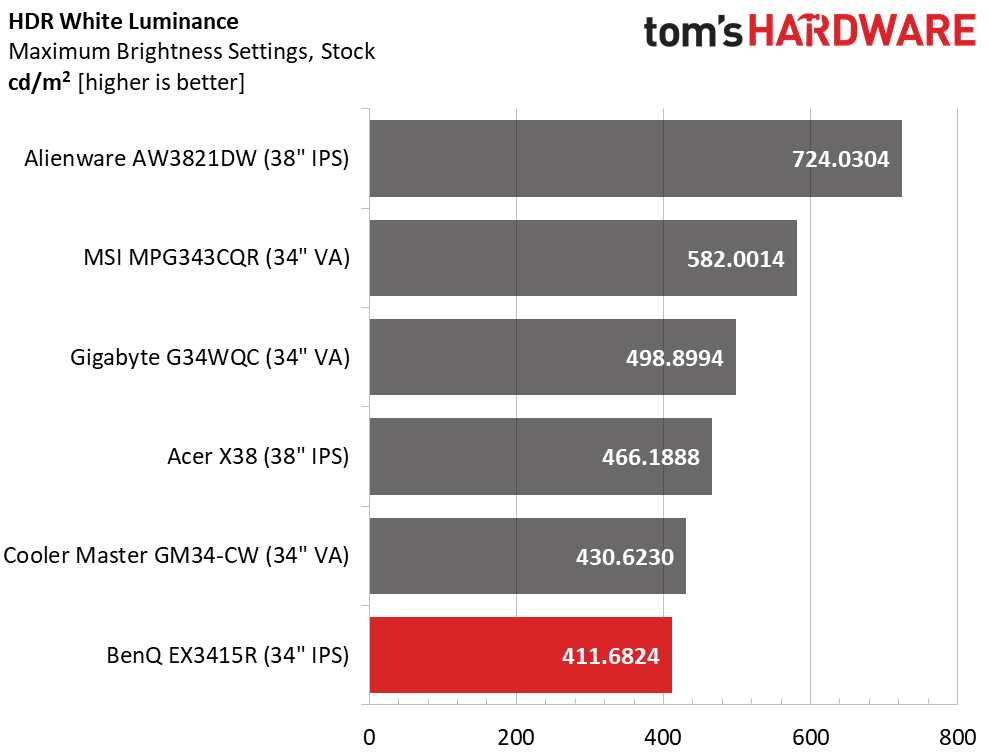
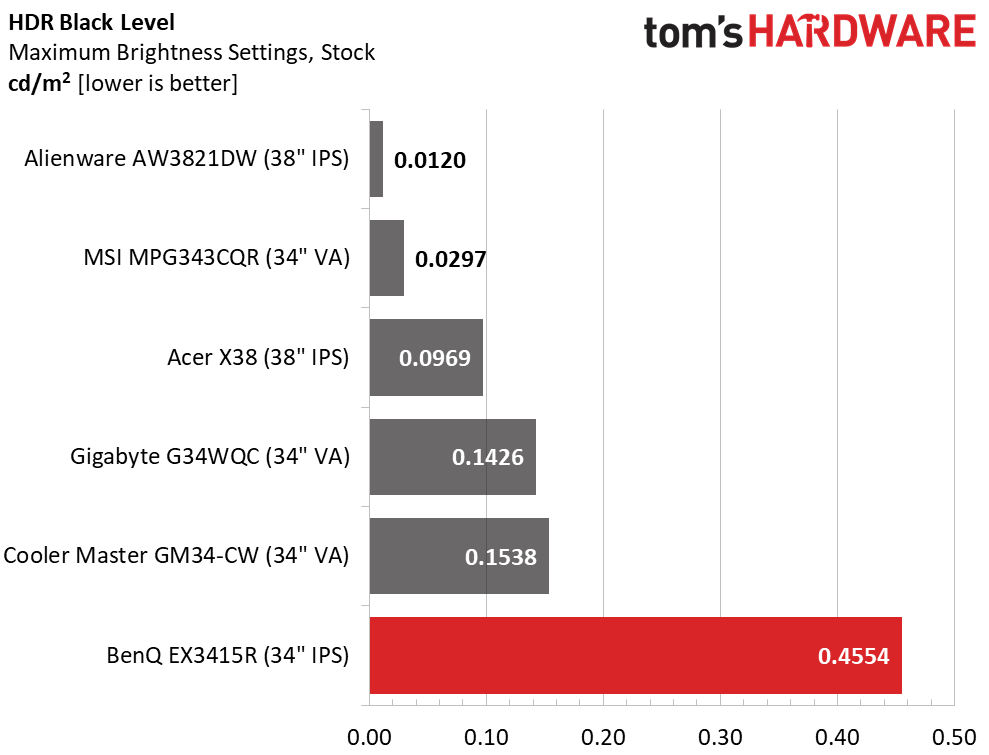
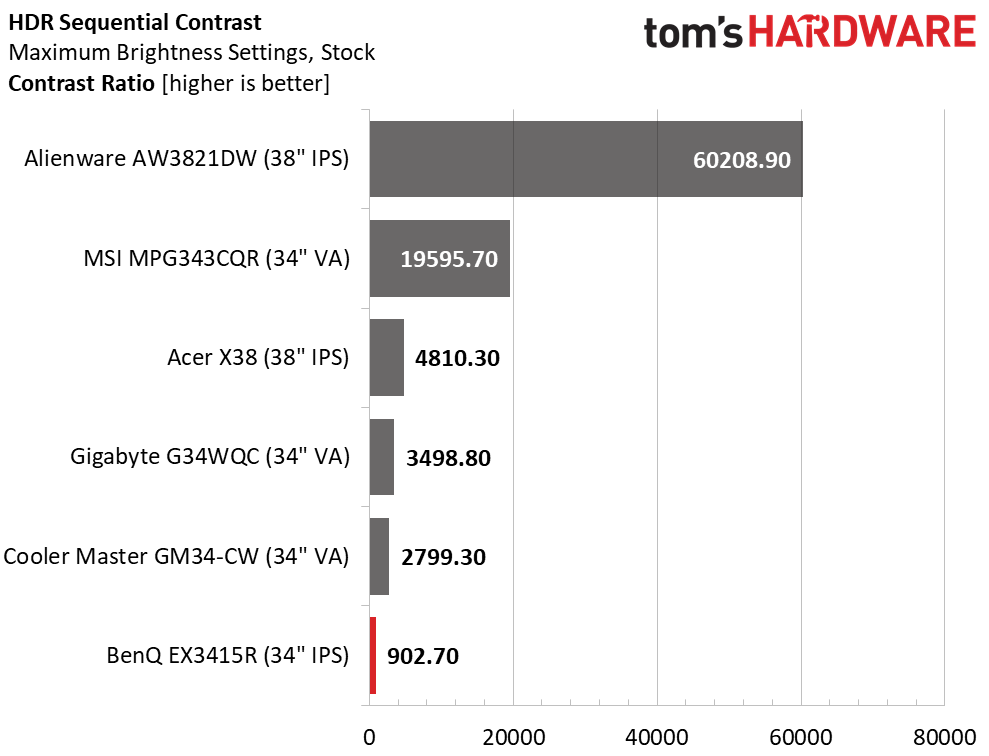
The EX3415R comfortably exceeds its DisplayHDR 400 rating but not by as great a margin as the other screens. Ultimately though, it’s not about maximum brightness but overall contrast, and that depends on black levels and whether or not a monitor has dynamic contrast.
The BenQ does not have dynamic contrast and, therefore, offers no more dynamic range in HDR mode compared to SDR. It posts roughly the same ratio, 902.7:1 in both HDR and SDR modes. At least the VA panels have greater native contrast, but you can see that the top finisher is an IPS monitor. A variable backlight should be considered a must in any HDR monitor, let alone the best HDR monitor.
Grayscale, EOTF & Color
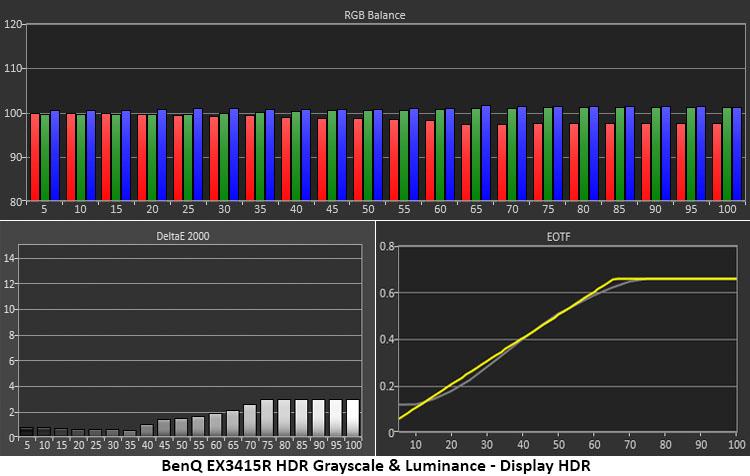
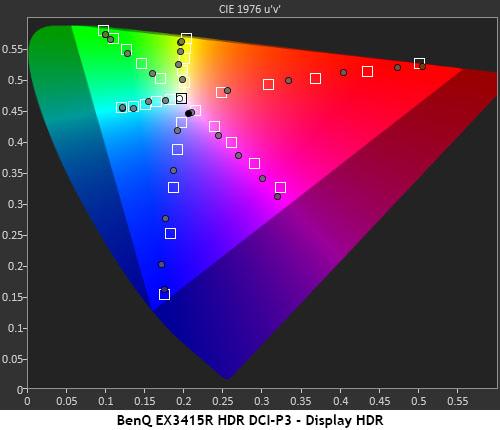
The EX3415R gets the grayscale, luminance tracking and color part of the HDR equation right. Grayscale is free of visible errors, and luminance tracking is almost perfect. Its only error is at the bottom of the brightness range, where black levels are too high and rise too quickly from 0-10%.
The HDRi modes have deeper blacks but clip shadow detail and ultimately make the image look murky in dark scenes. Color tracking is nearly the same as what we saw in SDR mode with slight oversaturation and accurate hues.
Get Tom's Hardware's best news and in-depth reviews, straight to your inbox.
Current page: HDR Performance
Prev Page Grayscale, Gamma & Color Next Page Viewing Angles, Uniformity, Response & Lag
Christian Eberle is a Contributing Editor for Tom's Hardware US. He's a veteran reviewer of A/V equipment, specializing in monitors. Christian began his obsession with tech when he built his first PC in 1991, a 286 running DOS 3.0 at a blazing 12MHz. In 2006, he undertook training from the Imaging Science Foundation in video calibration and testing and thus started a passion for precise imaging that persists to this day. He is also a professional musician with a degree from the New England Conservatory as a classical bassoonist which he used to good effect as a performer with the West Point Army Band from 1987 to 2013. He enjoys watching movies and listening to high-end audio in his custom-built home theater and can be seen riding trails near his home on a race-ready ICE VTX recumbent trike. Christian enjoys the endless summer in Florida where he lives with his wife and Chihuahua and plays with orchestras around the state.
-
cknobman $1000 for an edge array with only HDR 400 and not great contrast ratio?Reply
8bit panel?
Might be worth it for $650 tops -
g-unit1111 The Gigabyte G34wqc is 1/2 the cost and a better performer? Pretty lame, BenQ.Reply
I'll stick with BenQ for the cheap 1080P panels - that's where they really shine. -
coloradoblah The gigabyte is a hell of a bargain, granted it took me a few tries to get one that didnt have stuck pixels but for the price its pretty damn good.Reply